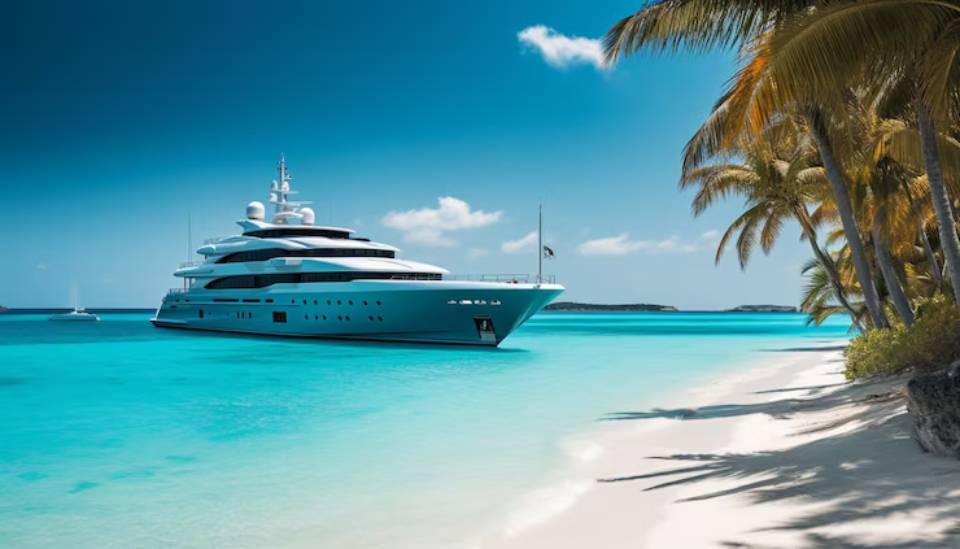
Understanding Cruise Itineraries: Ports, Sea Days, and More
Imagine stepping aboard a cruise ship, drink in hand, sun on your face — only to discover mid-trip that you’ll have three days at sea before your first port. Or maybe you’ve booked a Caribbean getaway, but half your stops are commercial ports with little local charm. These surprises can turn excitement into disappointment fast.
Understanding your cruise itinerary is one of the smartest things you can do before booking. Yet, it’s often overlooked in favour of flashy ship amenities or low prices. Your itinerary determines not just where you’ll go, but how you’ll spend each day — and whether it matches your travel goals.
This guide will help you decode the fine print of cruise itineraries, from the meaning of port days and sea days to how different regions influence scheduling. You’ll learn how to spot the red flags, plan smartly, and choose the voyage that delivers the experience you actually want.
What exactly is a cruise itinerary?
A cruise itinerary is essentially your travel blueprint. It lists your departure port, destination ports, sea days, and disembarkation point, often over the span of 3 to 14 nights. While it may look simple at first glance, these details shape your entire cruise experience.
Key components of a cruise itinerary:
- Embarkation port: Where your cruise begins.
- Port days: Days spent docked at destinations where you can explore.
- Sea days: Days spent entirely at sea with no port stops.
- Final port: Where the cruise ends — sometimes different from your starting point.
- Overnights or late stays: Extended time in port, occasionally overnight.
It’s not just about ticking off destinations. It’s about how long you spend in each place, what you can realistically explore, and how the pace affects your overall enjoyment.
Port days: Your window to the world

Port days are when your ship docks at a destination, giving you time to explore on land. These are often the highlights of the trip, offering opportunities for cultural immersion, beach time, shopping, or guided tours.
What to expect on port days
- Arrival times: Usually between 7am and 9am, though this varies.
- Departure times: Ships typically leave by 5pm to 7pm — but always check the ship’s daily schedule.
- Shore excursions: These range from cruise line-organised tours to independent options you book yourself.
- Reboarding: You must return to the ship by a designated time, often 30–60 minutes before departure.
Tip: Some popular ports like Santorini or tender-only destinations may have limited access windows or queues, meaning you’ll need to plan carefully to make the most of your visit.
Pros and cons of port-heavy itineraries
Pros:
- Maximum destination exposure
- Great for culturally curious travellers
- Opportunities to sample local cuisine, history, and attractions
Cons:
- Early starts and constant movement can be tiring
- Less time to enjoy onboard amenities
- Risk of feeling rushed at each stop
If your priority is to explore new places daily, look for itineraries with at least four or five port days and minimal long-haul sea stretches.
Sea days: Relaxation or boredom — it’s what you make of it
Sea days are full days spent cruising between ports. Depending on your ship and your preferences, these can be a highlight or a hurdle.
What makes a sea day enjoyable?
- Onboard activities: Think spa appointments, lectures, dance classes, pool lounging, or even surfing simulators.
- Dining experiences: Sea days are great times to try speciality restaurants or indulge in a leisurely brunch.
- Scenic cruising: In areas like the Norwegian fjords or Alaska, sea days often include glacier viewing or sailing past dramatic landscapes.
Sea days give you time to relax and enjoy your floating resort. But if you’re someone who gets restless easily, two or more sea days in a row might feel like too much.
Sea day-heavy itineraries: Who are they for?
Cruises like transatlantic crossings or repositioning cruises often feature long stretches at sea — sometimes 5–7 days at a time. These suit:
- Travellers who love a slow pace
- Readers, sunbathers, and food lovers
- Passengers who prioritise the ship over the destination
But they’re less ideal if you’re primarily excited by exploring new ports.
If you’re new to cruising, first-time cruiser tips such as choosing a balanced itinerary can help you enjoy both port and sea days without feeling overwhelmed.
Common cruise itinerary types explained
Cruise itineraries vary widely depending on region, cruise length, and style. Here are some popular types to consider:
1. Round-trip itineraries
These start and end at the same port, often simplifying flight planning. Ideal for Caribbean or Mediterranean cruises.
2. One-way (open-jaw) itineraries
You board at one port and disembark at another. Common in Alaska, allowing you to cover more territory, but requiring one-way flights.
3. Repositioning cruises
Ships relocate from one region to another (e.g., from the Caribbean to Europe). These cruises are typically longer, with many sea days, and often more affordable.
4. Themed or niche itineraries
These may focus on wellness, music, wine, or history — with carefully curated shore experiences that reflect the theme.
Understanding your preferred travel pace helps you decide which structure suits you best. For example, a wave season deal might look tempting, but if it includes multiple back-to-back sea days, it’s worth checking if that suits your style.
Itinerary depth: Time in port matters more than port count
Don’t be dazzled by the sheer number of ports — the quality of each visit is what counts. A quick stop from 8am to 2pm barely scratches the surface of a culturally rich city.
Look for itineraries with:
- Extended port stays (10+ hours)
- Overnights, especially in cities like Venice or Reykjavik
- Late evening departures, allowing time for dinner ashore or sunset views
Watch out for: “Cruise-by” listings, where the ship doesn’t dock but sails past a location for viewing only. These are great for scenery but not for exploration.
Itinerary planning tips for different traveller types
For culture and history enthusiasts
- Opt for Mediterranean or Baltic cruises
- Look for excursions to UNESCO World Heritage sites
- Prioritise long port stays
For beach and nature lovers

- Caribbean or South Pacific cruises offer island-hopping
- Choose lines that access remote or less-commercial ports
- Sea day-heavy itineraries may not be ideal
For food and wine travellers
- Look for culinary cruises in regions like France or Italy
- Check for excursions that include local market visits or wine tastings
For wellness-focused travellers
- Choose ships with spa-focused itineraries
- Seek out quieter itineraries with more sea days
What to avoid in a cruise itinerary
Even experienced cruisers can get caught out by an unbalanced or misleading itinerary. Here are a few red flags:
- Too many tender ports: These require small boats to reach shore and can involve delays or cancellations in bad weather.
- Repetitive stops: Some routes may include ports with similar offerings — not ideal if you’re after variety.
- Short cruise lengths with few ports: A 3-night cruise with one port day might feel underwhelming.
Always cross-check ports using travel forums, YouTube vlogs, or cruise review sites to get a clearer picture of each destination’s appeal.
Conclusion: Read the fine print, cruise like a pro

Your cruise itinerary is more than a list of stops — it’s the foundation of your entire trip. Understanding how port days and sea days are distributed, what each destination offers, and how long you get to enjoy it all makes a world of difference.
By choosing an itinerary that matches your interests and energy levels, you’ll not only avoid disappointment but unlock the full joy of cruising — whether that’s watching the sun rise over a foreign shore or sipping wine while the ship gently cuts through the waves.
So before you book, pause and zoom in on that itinerary. Ask yourself what you want to get out of this trip, and choose the route that brings that vision to life. A smart choice today makes for unforgettable memories tomorrow.


